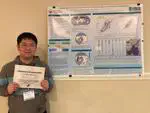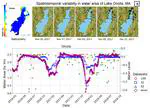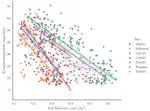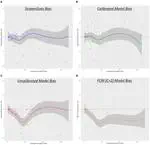Computational Hydrology Research Group at the University of Massachusetts Amherst
Welcome to Hydro@UMass!
This is the webpage of the Computational hydrology Research Group in the Civil and Environmental Engineering department at the University of Massachusetts Amherst. The group is led by Kostas Andreadis, and the research that we do focuses on the intersection of water resources modeling, remote sensing and in-situ observations, data fusion, and the study of large-scale hydrology as it relates to climate change and environmental monitoring.
About us
We are a team of motivated and ambitious scientists and engineers exploring the use of computational technologies for better understanding water availability globally. We strive to excel professionally but also prioritize a balanced, collaborative and supportive environment. We are strongly committed to mentoring and providing opportunities through our links to other research groups within the University of Massachusetts Amherst and other institutions around the world. Our research spans a wide range of topics about water resources engineering and science, and our current projects should give you a general idea about us.




